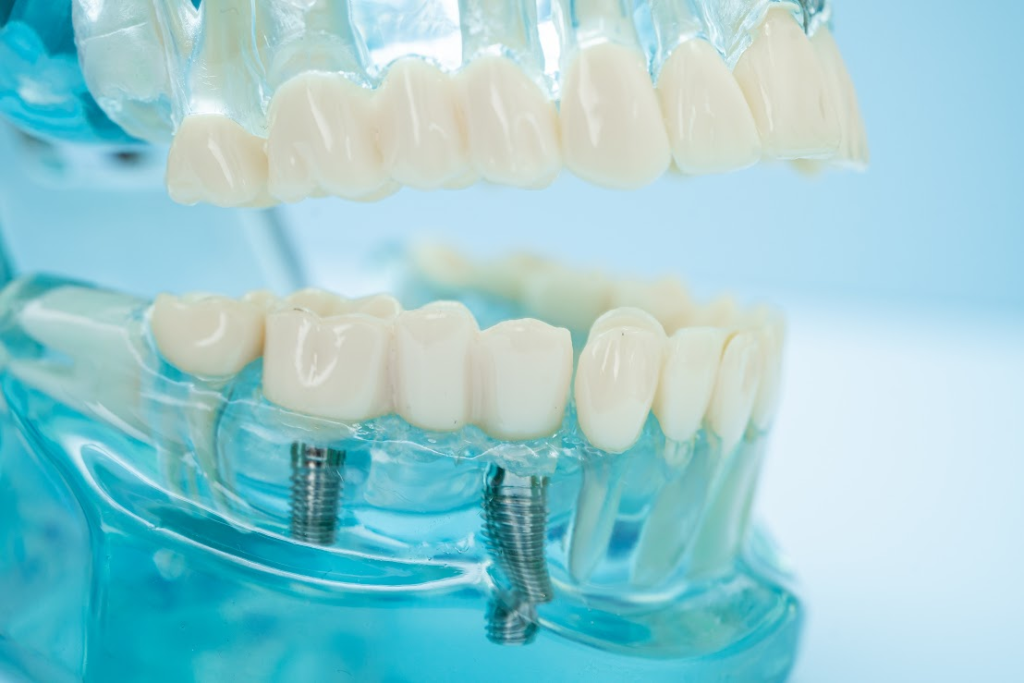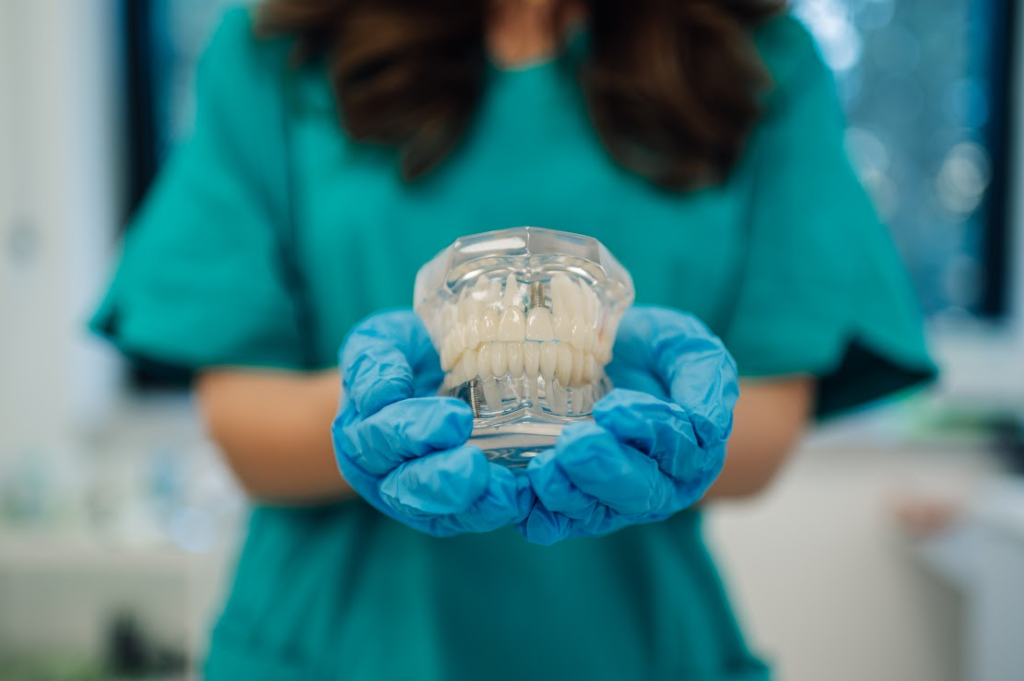Missing teeth are more than a cosmetic dentistry concern — they can impact chewing, speaking, and the alignment of your bite. One of the most effective ways to replace missing teeth is with a dental bridge, which uses artificial teeth anchored to neighboring teeth or implants to literally “bridge” the space left by tooth loss. This restoration is fixed in place, making it a stable and long-lasting alternative to removable dentures. From understanding the materials used to knowing how a bridge is placed and maintained, learning about a dental bridge can help you feel confident in choosing the best solution for your smile. Let’s explore everything you need to know about dental bridges so you can make informed decisions about your oral health.
The Purpose Behind a Dental Bridge
A dental bridge is based on the principle of restoring both function and aesthetics after tooth loss. When one or more teeth are missing, the adjacent teeth may shift over time, affecting your bite and potentially leading to further complications such as jaw pain or gum problems. A dental bridge prevents this by filling the gap with a custom-made replacement tooth anchored securely to the teeth on either side or to dental implants. The bridge distributes biting forces evenly, restores chewing function, and blends in beautifully with your natural teeth. Dental bridges come in various styles — including traditional, cantilever, Maryland, and implant-supported — giving your dentist flexibility to match the right bridge to your unique needs.
Creating a Child-Friendly Explanation of a Dental Bridge
Although most children rarely need a dental bridge, situations such as losing a permanent tooth in an accident may necessitate its consideration. Family dentists know how to explain bridges in kid-friendly terms, describing them as “puzzle pieces” that fill gaps in the smile. Using gentle language, visual aids, and models helps children understand why replacing a lost tooth is essential for speaking and chewing. Parents also receive guidance on whether a bridge is appropriate now or if a space maintainer would be a better option until the child’s teeth grow. This supportive approach ensures that families feel informed and confident about their treatment choices.
Benefits of a Dental Bridge for Adults
Adults are the most common candidates for a dental bridge because tooth loss due to decay, gum disease, or trauma occurs more frequently over time. Left untreated, a missing tooth can allow surrounding teeth to drift, destabilize the bite, and increase the risk of jaw joint issues. A dental bridge addresses these problems by filling the gap with a realistic-looking artificial tooth, which is securely attached to the supporting teeth.
Smile Restoration
A dental bridge is part of a comprehensive strategy to protect your oral health. Unlike removable dentures, bridges stay fixed in place, allowing you to chew, talk, and smile with greater confidence. Your dentist will evaluate whether supporting teeth are strong enough to hold a bridge or whether dental implants might be needed as anchors.
Stress-Free Bridges
Many adults worry about losing teeth and being left with gaps, but the dental bridge process is predictable and minimally invasive compared to full implants. Family-centered practices provide detailed explanations and gentle care, reducing fear and ensuring patients feel comfortable replacing missing teeth as soon as possible.
Strengthening Smiles With Trusted Bridge Care
Restoring your smile with a dental bridge is more than just a technical fix; it is a relationship built on trust and clear communication. Because bridge placement involves multiple steps — from impressions and preparing supporting teeth to final fitting — patients feel more confident working with the same dentist throughout. Family dentists guide patients through each phase, explaining the process and what to expect so there are no surprises. Consistent follow-up care to monitor the bridge and adjust the bite if needed reinforces this trust. Over time, that relationship supports healthier teeth and makes future dental care more comfortable and reliable.
Managing Complex Tooth Loss With a Dental Bridge
A dental bridge can solve problems far beyond a single missing tooth. Patients with multiple gaps, bite collapse, or shifting teeth due to advanced gum disease may require more complex bridge designs.
Bridges and Aesthetic Solutions
Some patients pair a dental bridge with whitening, cosmetic bonding, or even gum treatment to create a complete smile makeover. Coordinating these procedures ensures that the new bridge looks harmonious with the surrounding teeth, thereby enhancing the overall appearance of the smile.
Aligning Bridges With Other Treatments
In cases where teeth have drifted after extractions, braces or Invisalign® may be needed to align the teeth before a bridge is placed. In other cases, implants serve as additional anchors for a bridge when there aren’t enough healthy teeth for support. A family or restorative dentist can work with orthodontists and oral surgeons to plan these steps seamlessly.
Educating Patients About Dental Bridges
A crucial role of any good dental team is educating patients about what a dental bridge entails, including details on durability, cleaning techniques, material options, and what to expect in the long term.
Teaching Kids About Prevention
For children who witness a parent getting a dental bridge, it’s a perfect opportunity for family dentists to teach kids why preventing tooth loss is so important. Gentle, age-appropriate conversations about brushing, healthy foods, and protecting teeth during sports help build lifelong habits.
Supporting Parents With Bridge Care
Adults need practical guidance on bridge maintenance, including how to floss with a bridge, which foods to avoid, and what warning signs may indicate that the bridge needs adjustment. Demonstrations and printed instructions help patients feel confident caring for their restoration at home. The better informed a family is, the longer the dental bridge can last.

Customized Dental Bridges for Every Need
A dental bridge is a flexible, customizable treatment that can suit patients with different health conditions, cultural backgrounds, or special needs. Family dentists are skilled in adapting the bridge procedure for individuals with physical or developmental challenges, as well as those with dental anxiety. They also respect cultural beliefs and traditions, taking time to listen and discuss treatment preferences with empathy. This patient-centered approach helps everyone feel secure and supported during the restoration of missing teeth. Ultimately, compassionate and flexible care ensures that every person has access to a healthy, confident smile.
Why Choose a Dental Bridge Over Other Options
A dental bridge is a strong, simple, and natural-looking solution for replacing missing teeth, offering durability and stability without the hassle of removable dentures. Unlike dentures, a bridge stays fixed in place and functions much like real teeth. It can be more affordable and quicker to place than implants. It also helps preserve the alignment of surrounding teeth, supports your jaw structure, and prevents bite problems from developing. With proper care and routine dental visits, bridges can last a decade or more, making them a wise investment. Patients also value working with a single trusted dental practice for their bridge, ensuring consistent and reliable care.
Dental Bridge Care and Maintenance Tips
Caring for your dental bridge properly is crucial to ensuring its longevity. Teeth cleanings and regular dental visits help protect both the bridge and the teeth it supports.
Prepare Kids for Healthy Habits
If kids are active in sports, discuss the importance of mouthguards to prevent tooth injuries that could require a bridge later. Building positive attitudes around routine dental checkups sets the right tone for lifelong health.
Keep Consistent Checkups
Bridges require professional exams every six months to ensure they are stable, clean, and not causing stress on the supporting teeth. Preventive dentistry maintenance is easier than fixing a failed bridge later.
Set a Positive Example
Parents who brush and floss carefully, including cleaning under and around bridges, show kids what good dental care looks like. Kids are far more likely to follow your example.
Use Encouragement
Praise children and teens for sticking to dental routines that protect their teeth from damage. Good habits now help prevent the need for a bridge in the future.
Communicate Early
Discuss any sensitivity, looseness, or unusual sensations around the bridge with your dentist. Addressing issues early prevents bigger problems and protects your investment.

Dental Bridges for a Strong, Beautiful Smile
A dental bridge does more than fill a gap — it helps you regain your confidence, protect oral health, and enjoy daily life without worrying about missing teeth. Whether you’re replacing one tooth or several, a bridge offers a strong, aesthetic, and reliable solution that can last for many years. Working with a compassionate dental team makes the experience far easier, with clear explanations, personalized care, and ongoing support to keep your bridge in top shape. Choosing a bridge means selecting a solution that protects your smile and preserves your bite, all while allowing you to look and feel like yourself again.
If you’re curious about whether a dental bridge is right for you or you want to explore other restoration options, visit our Meader Family Dentistry blog for more expert advice and resources.






